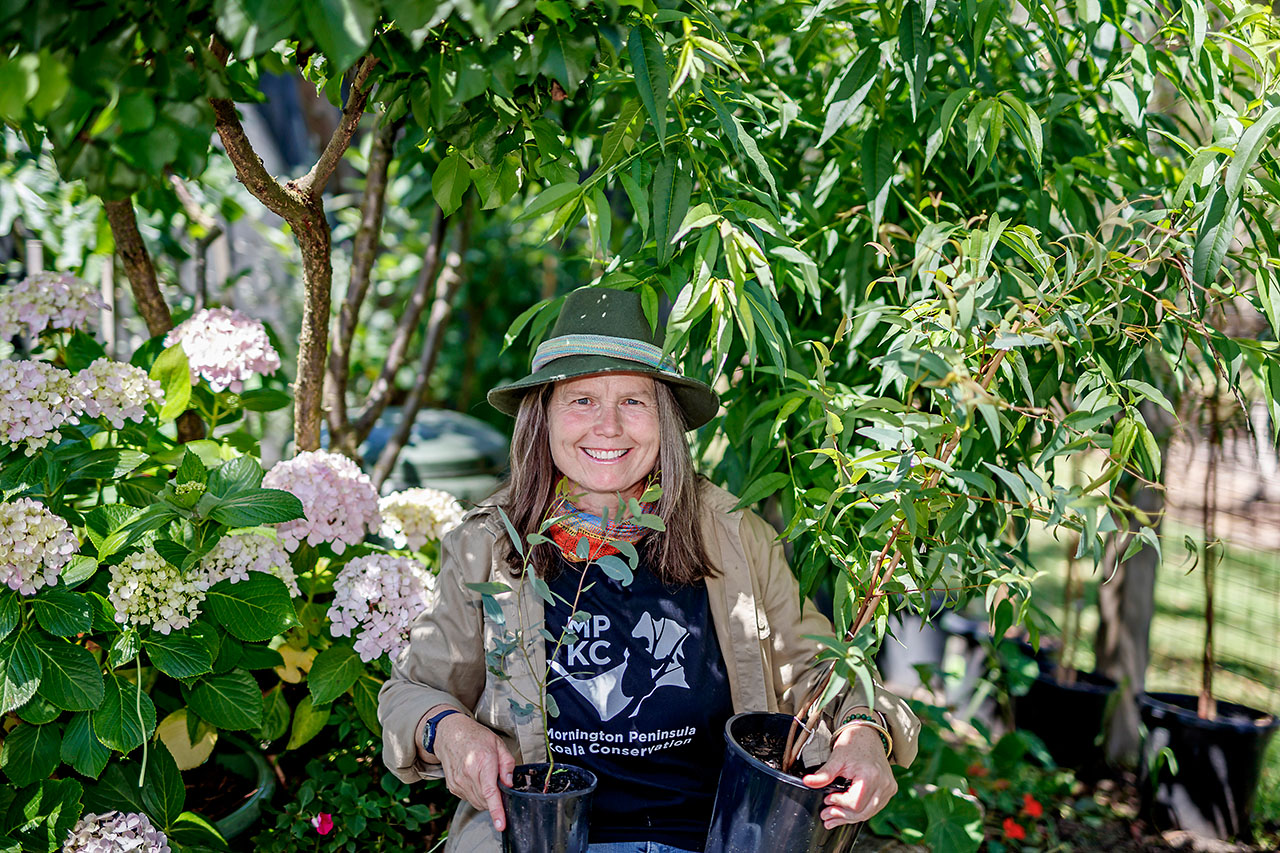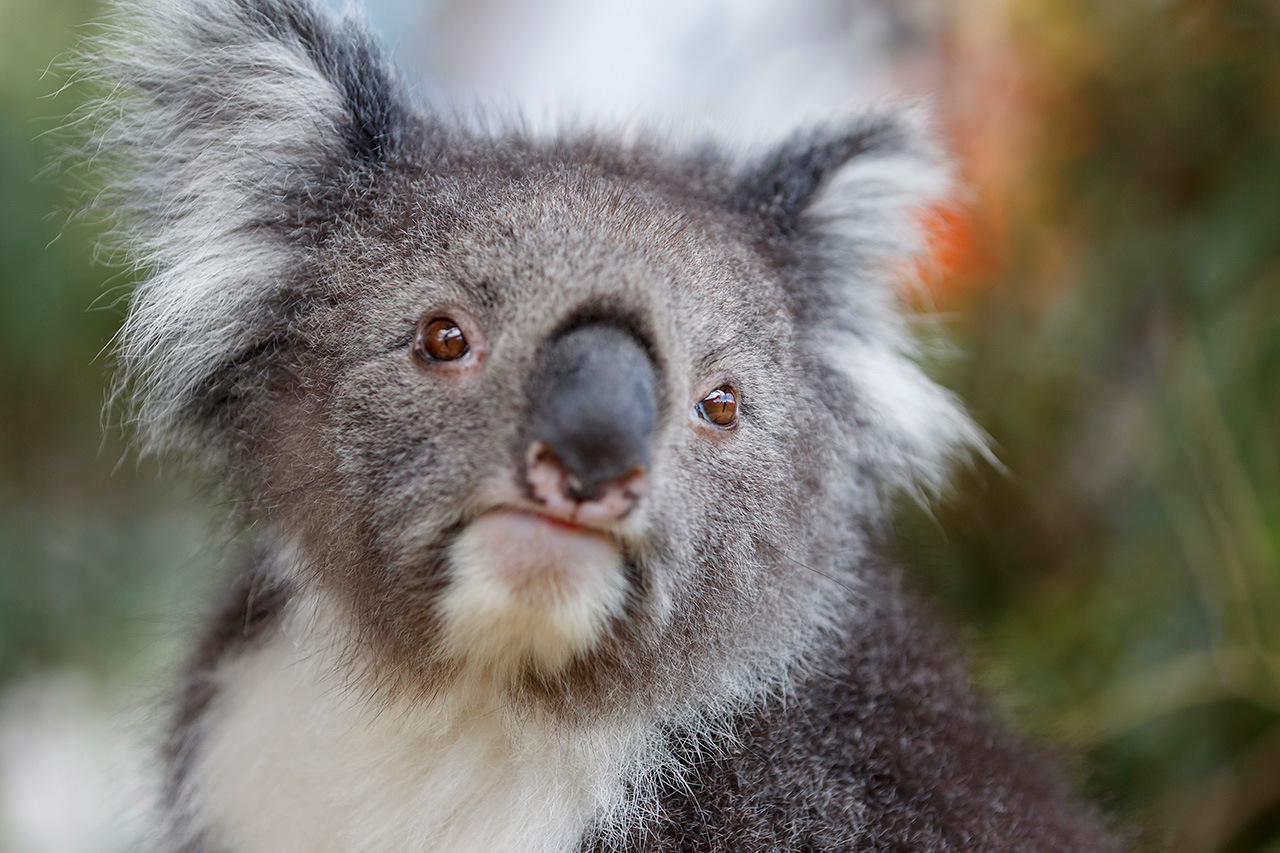
Mount Eliza horticulturalist Lisa Fitzgerald has dedicated her life to making the world a greener place and raising awareness about the importance of flora to the future of our planet. “Trees are our oxygen and air conditioning for Mother Nature,” she says. Now Lisa spends her time growing trees for koalas so that they have food and habitat. In the past four years she has single-handedly planted 10,000 trees.
Lisa works with a team of volunteers at Mornington Peninsula Koala Conservation – one of the largest land care groups in Australia. Together they have planted over 100,000 trees and shrubs on the Peninsula. Lisa says it’s imperative that indigenous trees go back into their correct geographical areas so that biolink pathways are available for koalas to find new habitat when housing development wipes out their homes.
Contrary to popular belief, koalas do not spend all of their time sleeping in trees. They are travellers. Male koalas will walk up to ten kilometres to find a mate during spring to summer breeding season. Lisa also wants people to be more mindful when driving. More than 30 koalas were killed by cars between Frankston and Flinders last year as they travelled to find trees after habitat loss. Koalas are an endangered species in many parts of Australia.
Lisa has always been a lover of trees and koalas. She was practically born to be a horticulturalist. As a child, Lisa was always outside in her little blue and red overalls and yellow gumboots. When she wasn’t playing in nature, she was drawing flowers, plants and her beloved koalas. She still has the plush koala toy she was given when she was three. “When I was a child growing up in Mount Eliza, I’d see koalas everywhere; now there is only one,” she says. Every summer, Lisa went on family camping trips to Mallacoota. On their boat exploring the inlets, Lisa kept a keen eye peeled for goannas, snakes and, of course, koalas.
In Year 10, a visiting career officer laid out all the possibilities for a girl who loved plants and nature. Lisa’s first work placement was at Lintons Nursery in Mount Eliza. She knew then that she wanted to be a horticulturalist, so she sent out letters to all of the parks, gardens and nurseries on the Peninsula and received many replies. She chose Crittendens Nursery, also in Mount Eliza.
At 16, Lisa started a trade certificate course in horticulture at Oakleigh Tech (now Holmesglen). It was a very comprehensive course with three years of classroom study and one year in the field. Lisa learned plant identification, pests, diseases, fertilisers and catalogued species in an herbarium press. Once a week she was tested on plant identification, always achieving the required 90% pass rate. Her studies were great preparation for work. Starting in retail worked out perfectly. Crittendens carried everything a horticulturalist would need. Being out in the community answering questions for customers gave Lisa confidence.
She quickly earned the nickname ‘The Plant Doctor’ because of her comprehensive knowledge.
While horticulturalists and botanists have similar goals, horticulturalists work primarily in the field propagating and growing, testing soil Ph, identifying species, assessing landscape design, working in garden maintenance and answering questions about all things related to plants.
Lisa took some time off to explore the gardens of Europe and North America. She lived in London for a couple of years and used it as a launching point to backpack around Europe. She was particularly interested in the history of heritage gardens. Lisa joined the Royal Horticultural Society of England to rub shoulders with like-minded people. Her favourite travel spots were the heritage gardens of England and France, Monet’s Garden at Giverny, New York’s Central Park and the forests of North America, particularly wild Alaska. She loved the colourful seasonal displays of mature deciduous trees.
Once home, Lisa started growing her own stock of drought- tolerant natives and cottage garden flowering plants. She sold them at Main Street Mornington Market and Mornington Racecourse Market. She was the first to sell ‘bloomer pots’. People loved them. Then, locals called Lisa ‘The Plant Lady’.

Now she is dedicated to growing the indigenous Peninsula trees koalas love, such as, Manna Gum, Swamp Gum and Peppermint Gum. Koalas can also be found in Coastal Banksias, some species of pine and even North American deciduous trees like maples. They are not just eating, but evading predators: cats, dogs, foxes and people.
Insufficient numbers of trees and fragmentation of habitat are the biggest problems facing koalas
Insufficient numbers of trees and fragmentation of habitat are the biggest problems facing koalas as the Peninsula has changed from countryside to suburbia. All Peninsula residents need to be planting new indigenous trees to maintain the unique biosphere we live in. “As long as we have mature trees, we’ll have koalas,” she says.
“The real challenge is ignorance. Many people don’t understand the importance of mature trees. When they’re gone, their genetics are gone forever. I’m all about sharing my knowledge and learning from others to make our spaces greener. I’d like to be known as a voice for nature,” she says.
FB: Lisa’s Holistic Plant Therapy
mpkoalas.org.au
